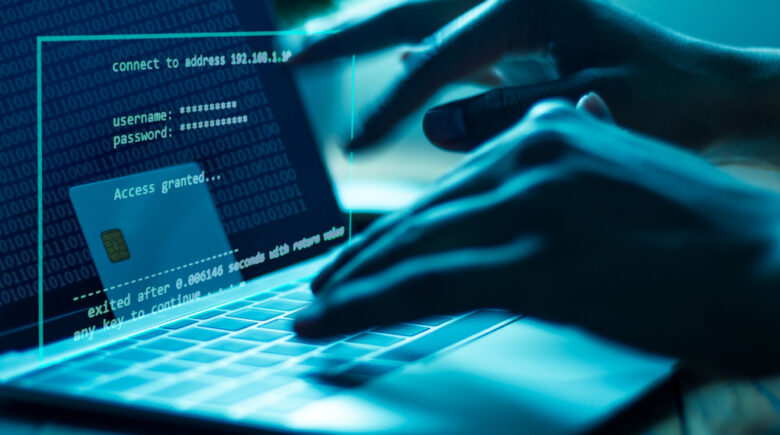In today’s digital age, where technology has become an integral part of our lives, banking has evolved significantly. While online banking offers convenience and accessibility, it also comes with its fair share of risks. Identity theft and fraud have become serious concerns, and it is crucial for individuals to be aware of the potential threats and take proactive measures to protect themselves. Here are valuable tips and insights into preventing identity theft and fraud in the banking sector.
Identity Theft
Identity theft occurs when someone unlawfully obtains and uses another person’s personal information, such as their name, address, Social Security number, or bank account details, with the intention of committing fraud. The consequences of identity theft can be devastating, leading to financial loss, damaged credit, and even legal troubles.
1. Safeguarding Personal Information
One of the fundamental steps in preventing identity theft is safeguarding personal information. Here are some essential tips:
• Secure Passwords: Create strong, unique passwords for all online accounts, including banking. Avoid using easily guessable information like birthdays or names. Use a combination of uppercase and lowercase letters, numbers, and special characters.
• Two-Factor Authentication: Enable two-factor authentication whenever possible. This adds an extra layer of security by requiring a second form of verification, such as a unique code sent to your mobile device, in addition to your password.
• Be Cautious with Personal Documents: Keep important documents, such as Social Security cards, passports, and bank statements, in a secure place. Shred any documents containing sensitive information before disposing of them.
• Phishing Awareness: Be vigilant about phishing attempts. Avoid clicking on suspicious links or providing personal information through email or phone calls. Legitimate organizations will never request sensitive information via these channels.
2. Monitoring Financial Activity
Regularly monitoring your financial activity is crucial for detecting and preventing fraudulent transactions. Here’s what you can do:
• Review Bank Statements: Carefully review your bank statements and credit card bills each month. Look for any unfamiliar transactions or discrepancies and report them immediately to your bank.
• Credit Monitoring: Consider subscribing to a credit monitoring service that alerts you to any significant changes in your credit report. This can help you quickly identify any unauthorized activity.
• Check Your Credit Report: Obtain a free copy of your credit report annually from the major credit bureaus. Review it for inaccuracies or accounts that you don’t recognize, as these could be signs of identity theft.
• Regularly Update Contact Information: Ensure that your bank has your current contact information. This will help them reach you promptly in case of any suspicious activity.
2. Securing Online Banking
Online banking has revolutionized the way we manage our finances. However, it is essential to take steps to secure your online banking experience:
• Use Secure Networks: Avoid accessing your online banking accounts on public Wi-Fi networks, as they may not be secure. Instead, use a secure, private network or your mobile data.
• Keep Software Updated: Regularly update your computer, smartphone, and banking apps with the latest security patches. Outdated software may have vulnerabilities that hackers can exploit.
• Be Wary of Suspicious Links: Do not click on links or download attachments from unknown or untrustworthy sources. These may contain malware designed to steal your personal information.
• Install Antivirus Software: Protect your devices with reputable antivirus software. This software can help detect and remove malicious programs that could compromise your online security.
3. Educating Yourself
Staying informed about the latest identity theft and fraud trends is crucial. Here are a few tips to help educate yourself:
• Follow the News: Keep up with the news, as identity theft and fraud stories may provide insight into how you can better protect yourself.
• Educational Resources: Utilize online educational resources to understand the tools and techniques used by scammers. This knowledge can help you recognize and avoid potential scams.
• Participate in Programs: Participate in local or online seminars about identity theft and fraud prevention. These programs may provide additional tips and strategies to help protect yourself.
• Stay Alert: Remain vigilant and aware of your surroundings. Watch out for any suspicious activity or people who may be trying to acquire personal information. Also, be cautious when providing sensitive data online or over the phone.
5. Be Cautious of Phishing Scams
Phishing scams are fraudulent attempts to obtain sensitive information, such as passwords or credit card numbers. Protect yourself by:
• Being skeptical of unsolicited emails, messages, or phone calls asking for personal information.
• Verifying the authenticity of websites before entering any sensitive information.
• Avoiding clicking on suspicious links or downloading attachments from unknown sources.
• Keeping your computer and mobile devices updated with the latest security patches and anti-malware software.
6. Use Multi-Factor Authentication
Multi-factor authentication adds an extra layer of security by requiring two or more credentials to access an account. Instead of just providing a username and password, you may be asked to provide additional information such as a security code sent to your phone or a fingerprint scan. Consider using multi-factor authentication for any online accounts that contain sensitive data.
7. Secure Your Devices and Networks
Protecting your devices and networks is critical in preventing identity theft. Use strong and updated security software, including antivirus and anti-malware programs, on your computers and mobile devices. Keep your operating systems, applications, and browsers up to date with the latest security patches. Secure your home Wi-Fi network with a strong password and enable encryption to prevent unauthorized access.
8. Shred Sensitive Documents
Before discarding any documents containing personal information, such as bank statements, credit card statements, or medical records, make sure to shred them. Identity thieves can rummage through trash to find sensitive information, so using a cross-cut shredder adds an extra layer of protection.
Conclusion
Identity theft and fraud can have severe consequences on your personal and financial well-being. By following these prevention tips and staying vigilant, you can significantly reduce the risk of becoming a victim. Safeguard your personal information, use strong passwords, be cautious of phishing scams, and monitor your credit and financial accounts regularly. Remember, prevention is key to maintaining the security of your identity and financial information in today’s digital world.



